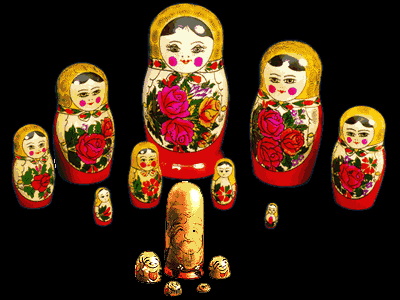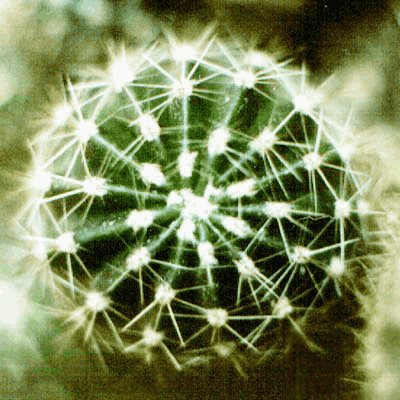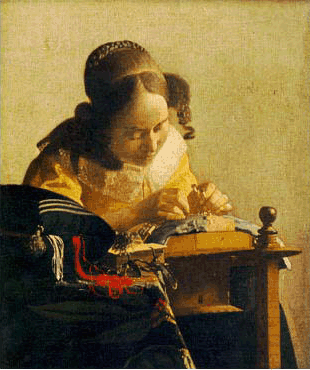|
Folklore Reflection on the subject of filling electron shells can cause various associations. One of them is Russian Matrioshka or Japanese dolls Shichi-fuku-jin ("Seven Gods of Luck"), where the larger doll serves as a container for smaller ones.
Figure 2. The Japanese dolls Shichi-fuku-jin enclosed by Russian Matrioshkas.
An example of filling electronic subshells. A shorthand method is used that lists only those electrons in excess of the noble gas configuration immediately preceding the atom in the periodic table. He is inserted like Matrioshka in Ne, both of them are inserted in Ar and so forth. Among vegetative objects the multilayer
structure can bring to mind also an onion bulb or a cabbage with leaves
folded into a compact head. The other botanical example will be considered
below.
Geometry The following association is a spiral. The recurring with the addition is the spiral.
Figure 3. The spiral form of the periodic system of elements. For some time my spiral table seemed to
me original and fresh, but actually, the age of this is more than a century.
From the authors whom I know the first one to offer a spiral structure
of the system of chemical elements was T. Karnelli in 1886. (I am not sure
in a correct latin spelling, the surname was found out in Russian
on exposure in Polytechnic museum in Moscow).
Botany In the above-stated figure the spiral system of elements is represented, the image of which is caused in memory by regularities of leaves arrangement, or phyllotaxis (for example, spines disposition on a cactus) [7].
Figure 4. The cactus. The spiral - radial analogy.
Painting
Figure 5. Johannes Vermeer's work "The Lacemaker", 1664-65; Louvre, Paris. The idea of a composite likeness with spiral
patterns of a sunflower's head stated by Salvador Dali. However, it is
easy to distinguish a classical pyramidal composition.
Literature We discover in the children's literature
of different countries and peoples remarkable and numerous examples of
spiral (recurring with addition) constructions. English (and not only English)
children have a folktale "This Is The House That Jack Built", Francophones
have - the songs "Biquett' ne veut pas sortir des choux" ("Biquette
does not want to leave cabbage"), "Alouette gentille Alouette"
("Skylark lovely Skylark"), "J'ai perdu le do de ma clarinette"
("I have lost 'do' (the pitch 'C') of my clarinet"), in Russian - fairy
tales "Kolobok" ("Roll"), "Teremok" ("Little Tower"), "Repka"
("Turnip"), "Fox with the rolling pin". Compare filling of atom's
electron shells and subshells with a famous folktale.
some works of the children's literature on the example of the folktale "This Is The House That Jack Built". |



